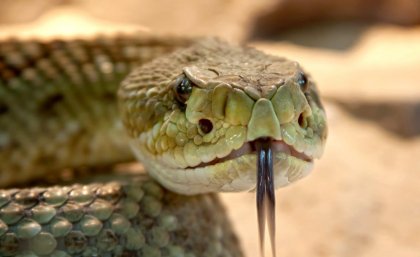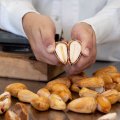
Researchers have shown why a fragment of a protein from the venom gland of rattlesnakes could be the basis for an alternative to conventional antibiotics.
The University of Queensland’s Institute for Molecular Bioscience (IMB) was part of an international study that investigated how a part of the crotalidicin peptide kills bacteria, without impacting healthy cells.
IMB’s Dr Sónia Troeira Henriques said the research was significant due to the increase in drug-resistant strains of bacteria, and the scarcity of conventional antibiotics in development.
“This is an example of taking what nature has given us and trying to understand how it works, so we can modify it to be more potent, more stable or more drug-like, to use as an alternative to what we have in our pharmacy now.”
The research showed the peptide fragment targets the surface of the bacteria through electrostatic attractions, caused by differences in membrane properties.
“The peptide is positive while the bacteria is negative, allowing it to kill the bacteria by inserting and disrupting the membrane,” Dr Henriques said.
“Because the cells in the body hosting the infection are neutral, they are not disrupted.”
The project was led by Professor David Andreu from Pompeu Fabra University in Spain, who previously found the fragment retained the antimicrobial potency of the full peptide, but was less toxic to other cells.
Dr Henriques said the research was conducted on bacteria strains including those causing serious hospital-acquired infections.
“These are usually difficult to target because they have an extra membrane and are often camouflaged by a capsule or slime layer.”
IMB scientists joined counterparts from Spain, Portugal and Brazil on a Research and Innovation Staff Exchange (RISE) program funded by the European Commission within the Horizon 2020 framework.
The program enabled mobility and knowledge transfer between institutions, with Professor David Andreu spending six months with Dr Henriques and Professor David Craik at IMB in Brisbane.
Dr Henriques is now exploring other peptides produced by nature for potential use as antimicrobial or cancer targeting drugs, with a particular focus on melanoma and breast cancer.
The study is published in the Journal of Biological Chemistry.
The University of Queensland is proud to partner with the Queensland Museum for the World Science Festival Brisbane from 21-25 March 2018 - https://world-science-festival.event.uq.edu.au/.
Media: IMB Communications, communications@imb.uq.edu.au, +61 7 3346 2134, +61 418 575 247.










